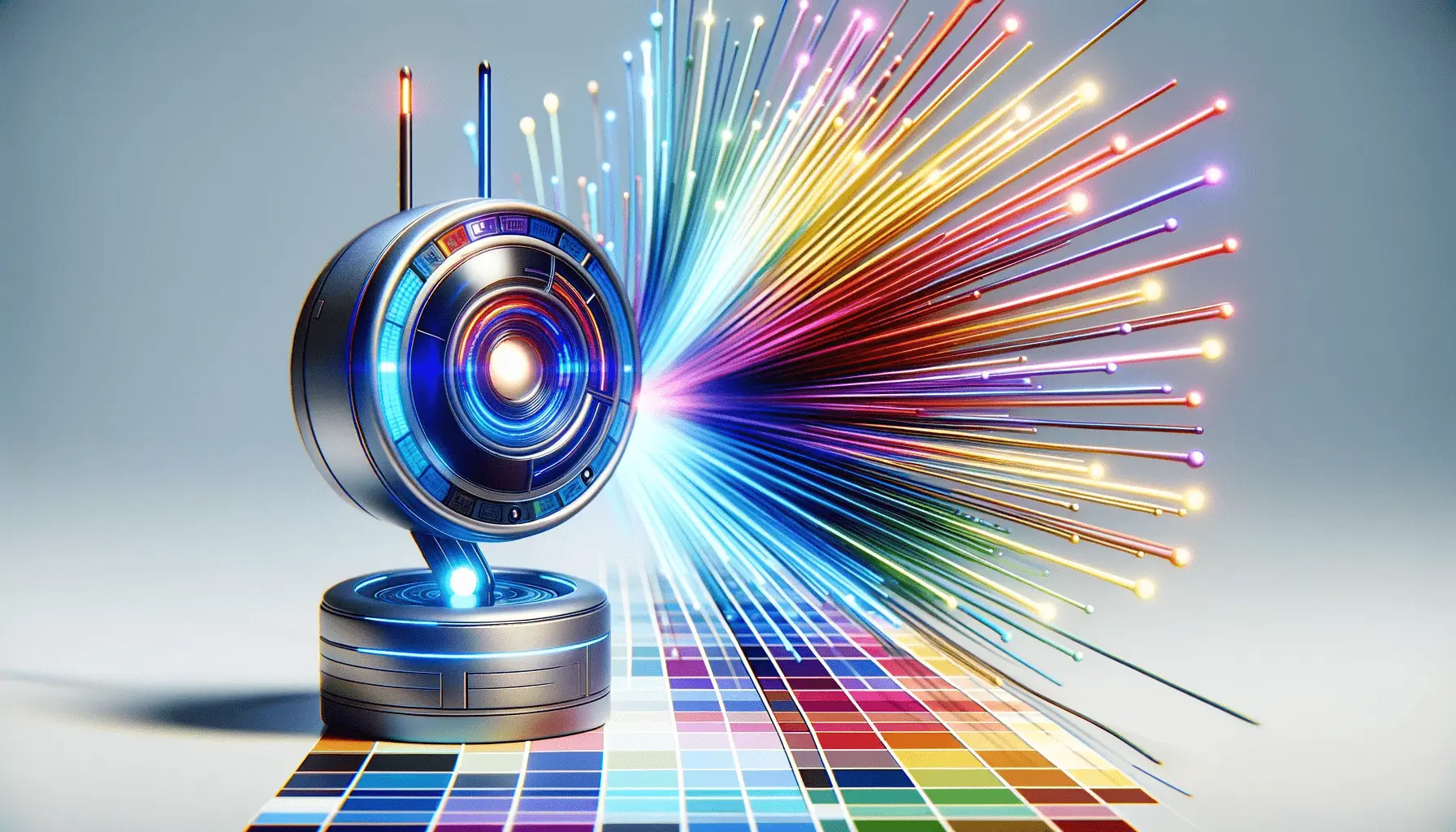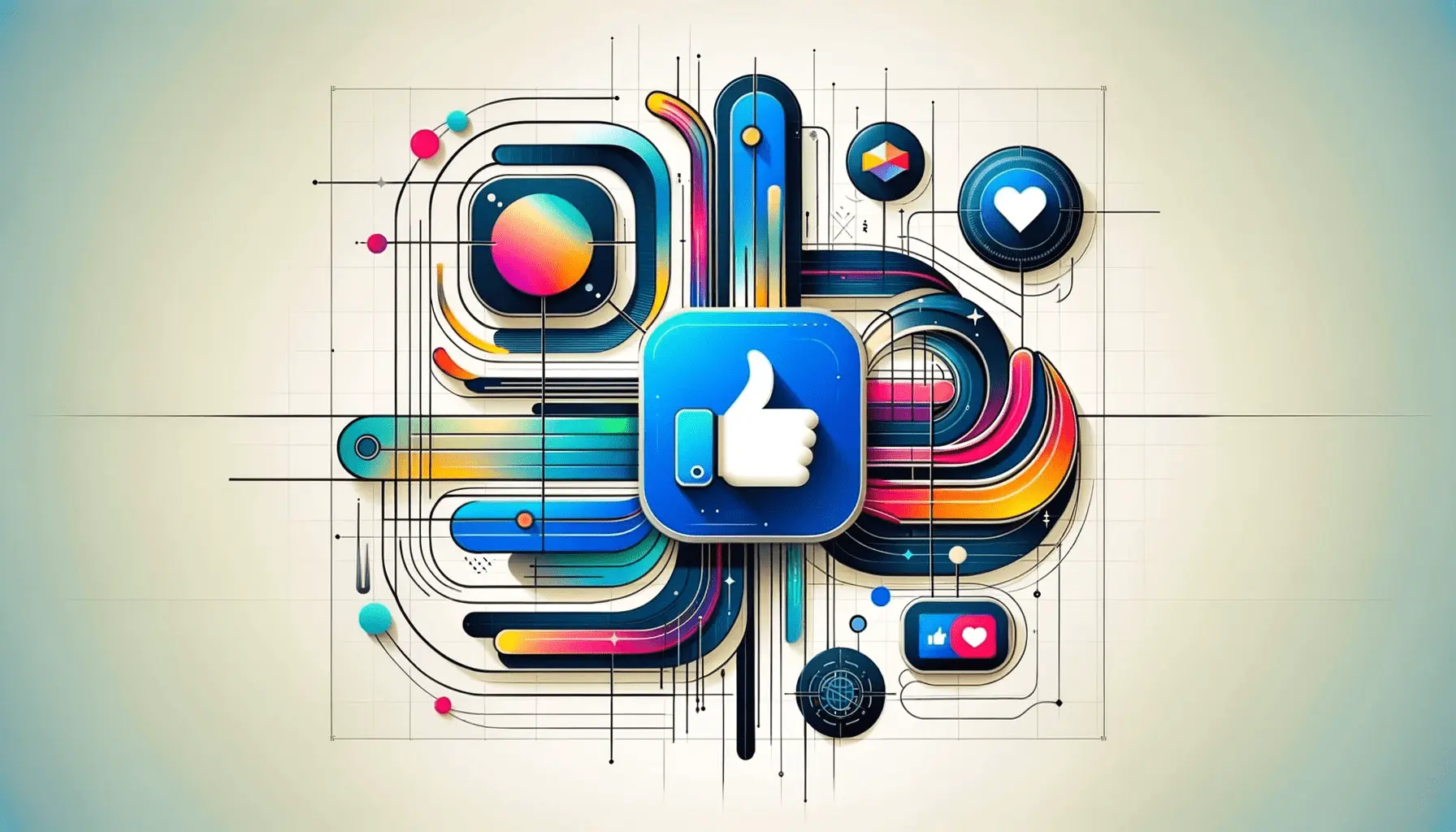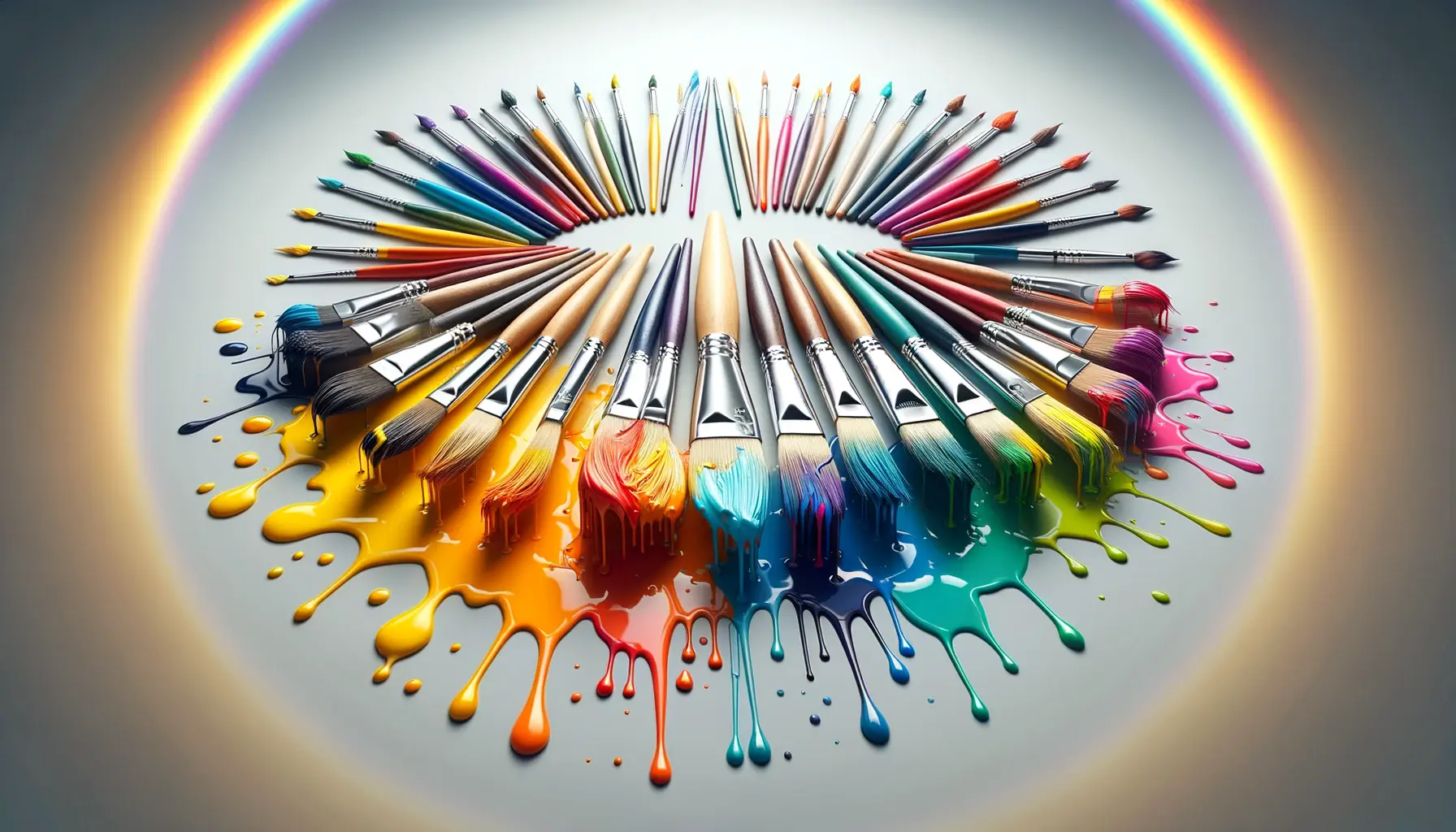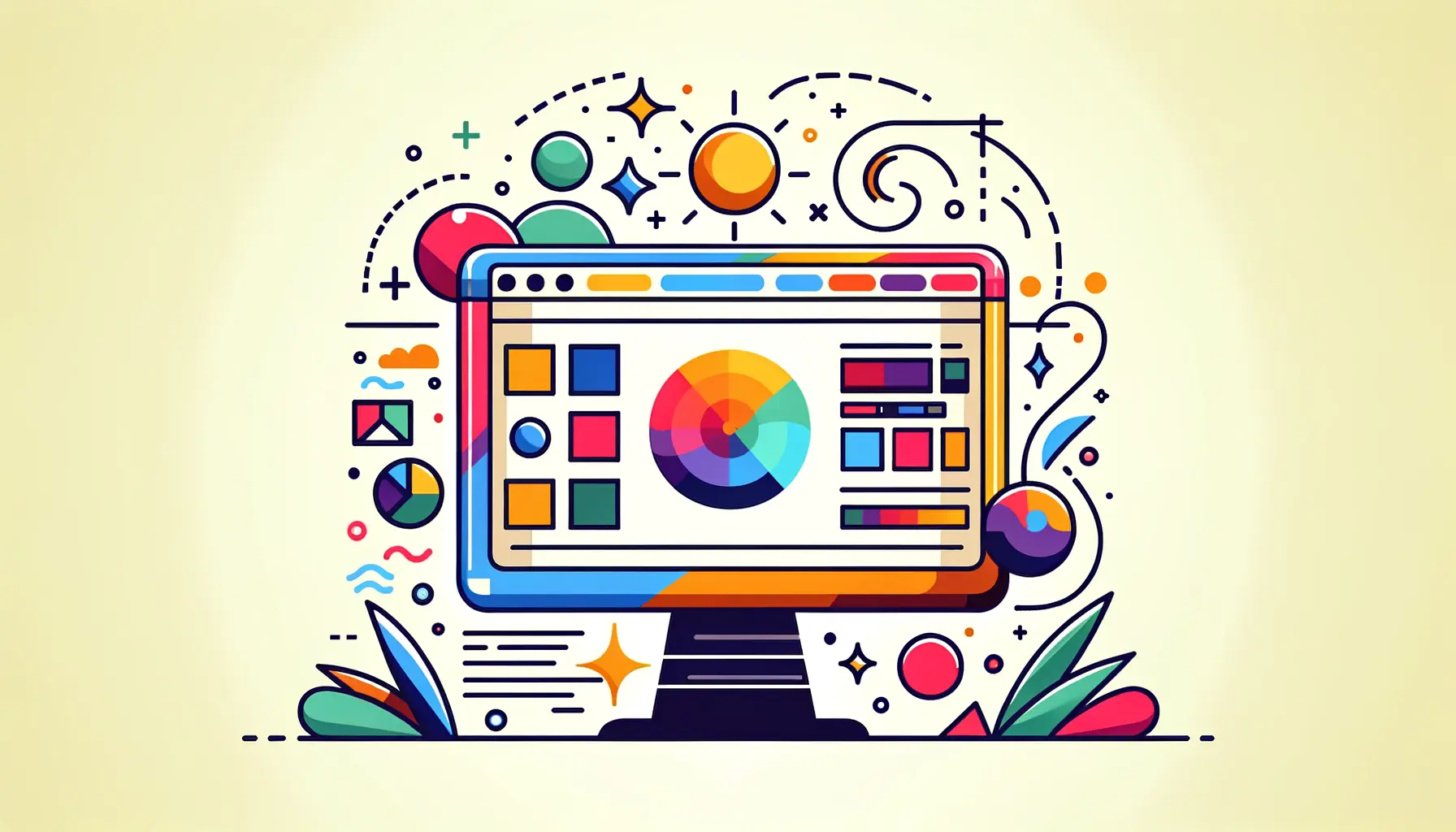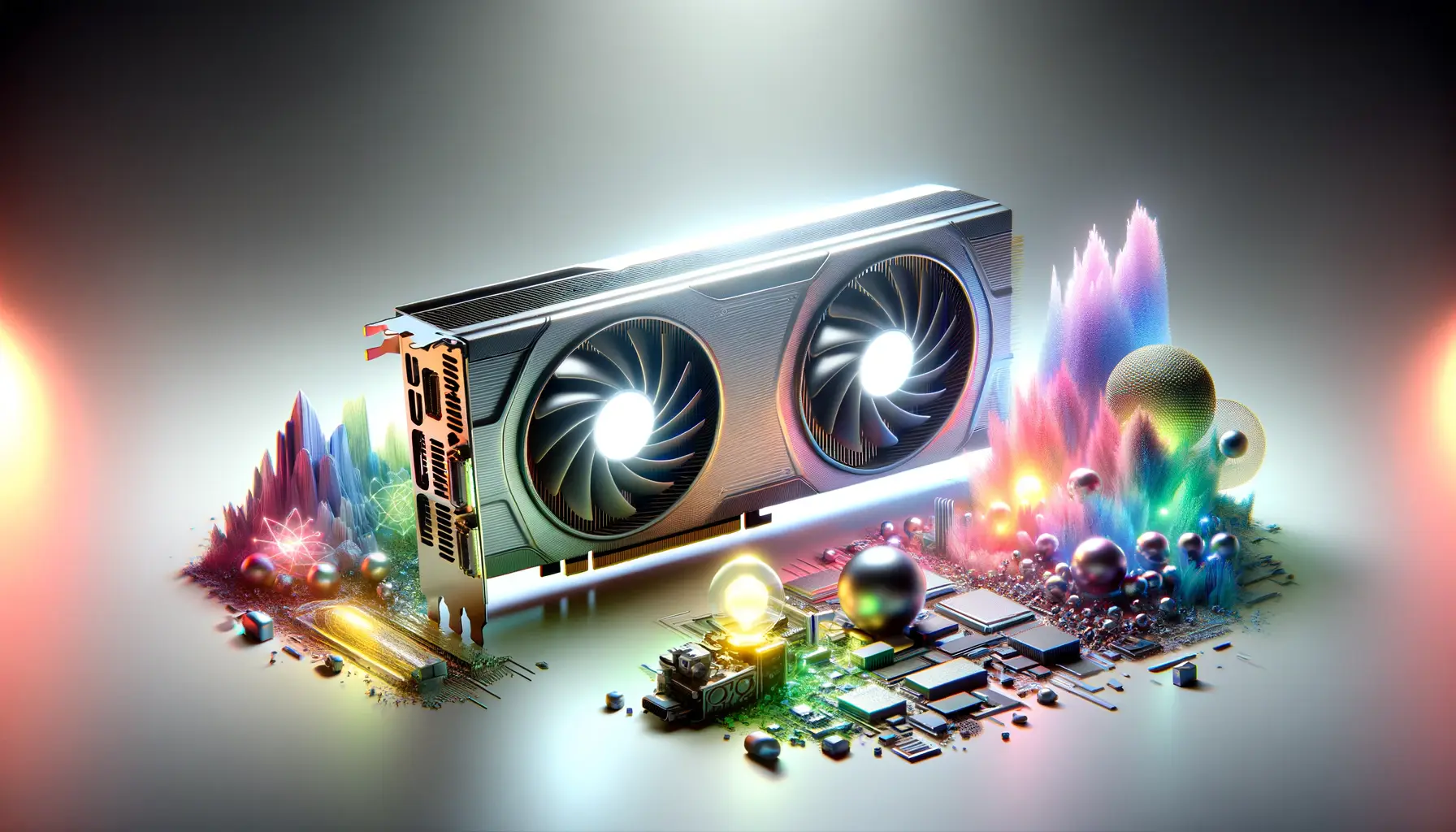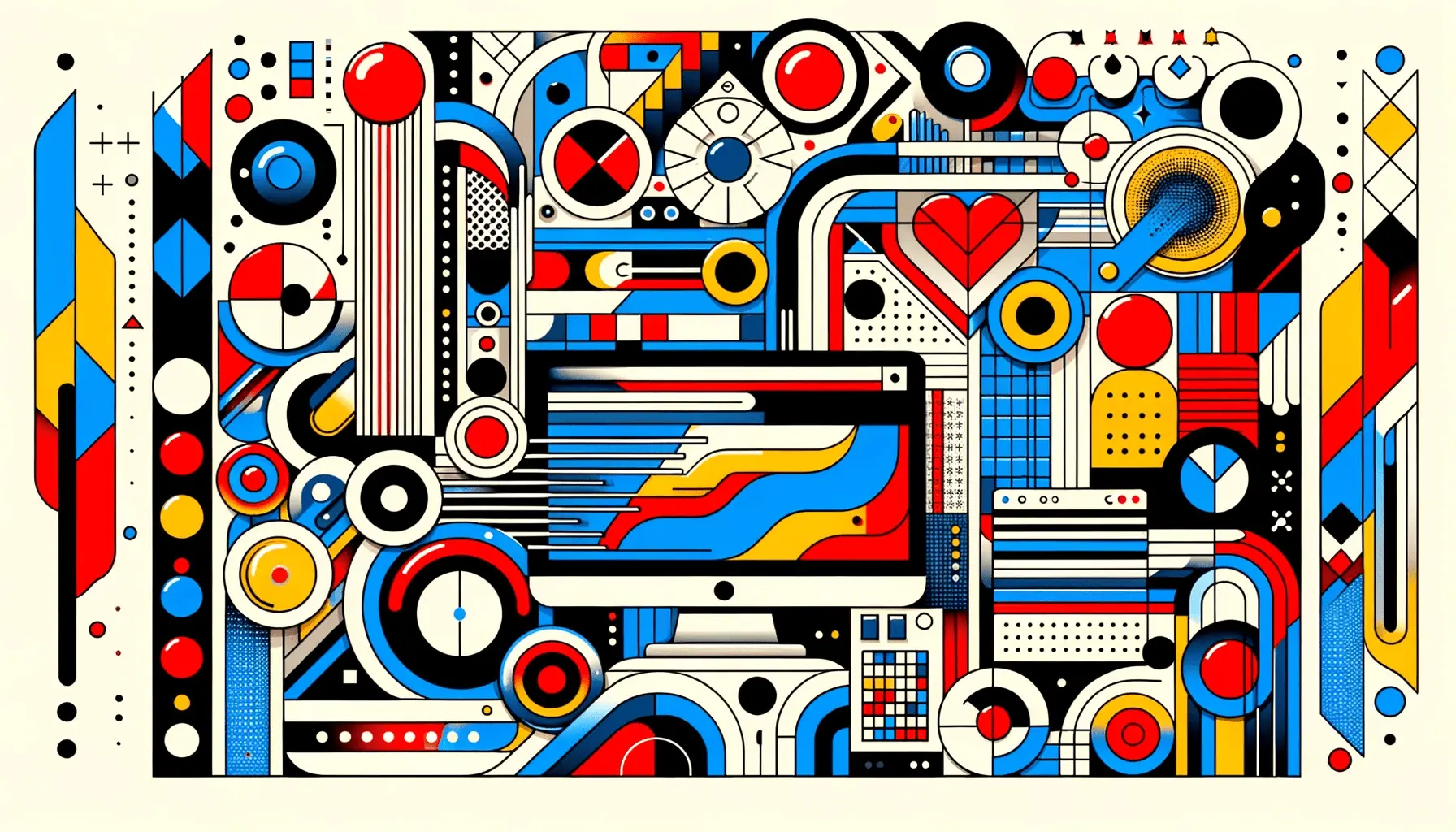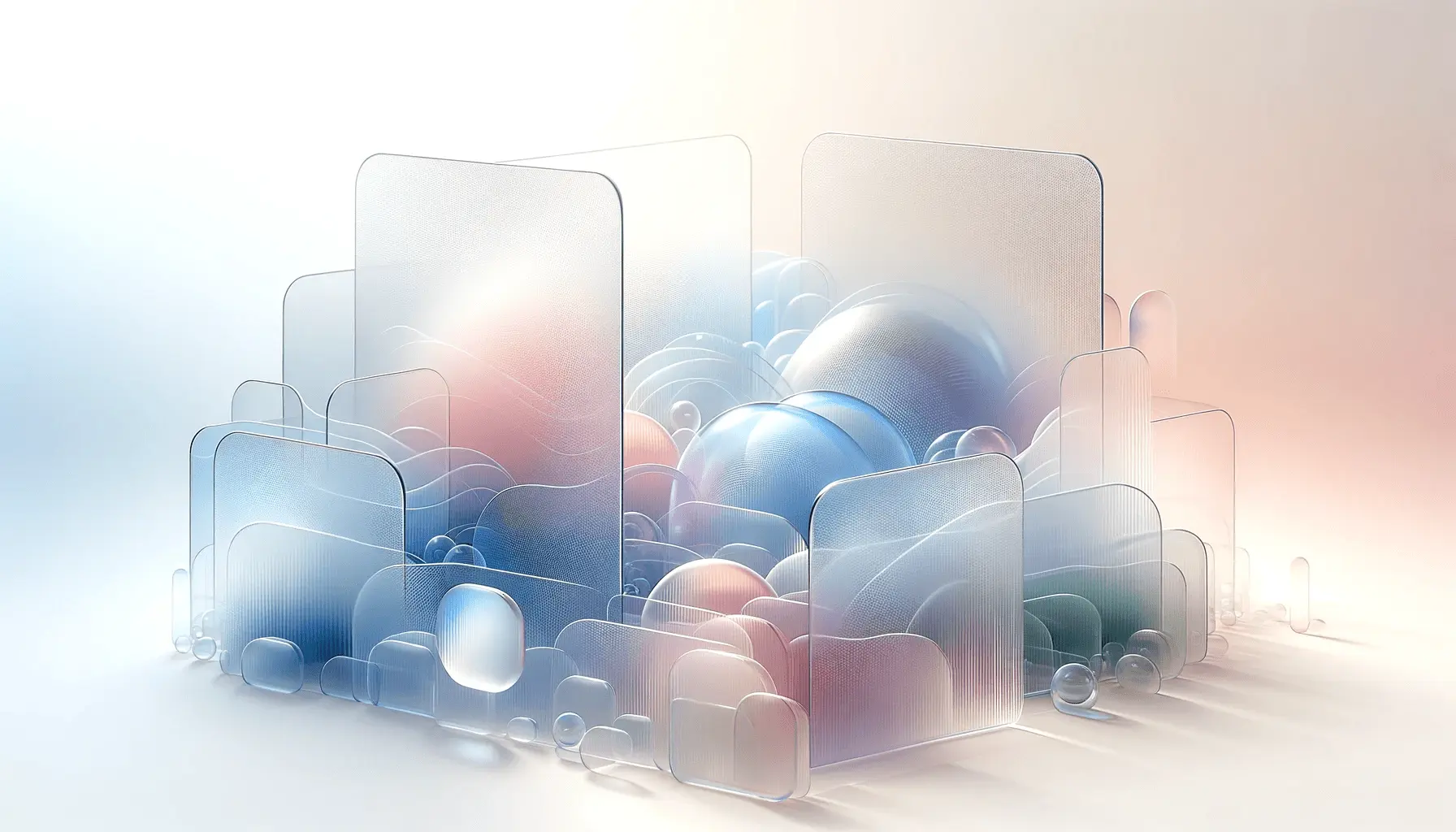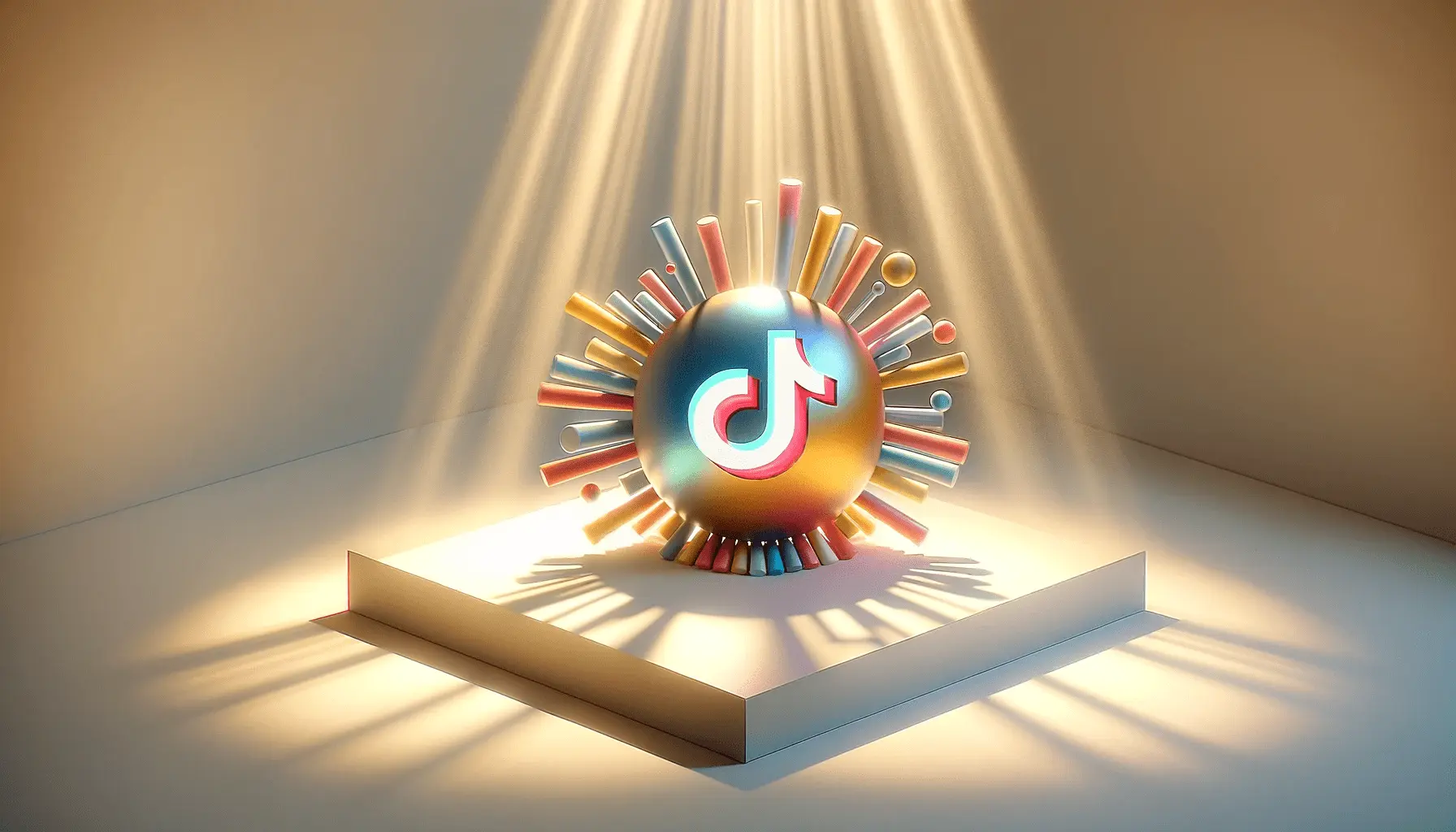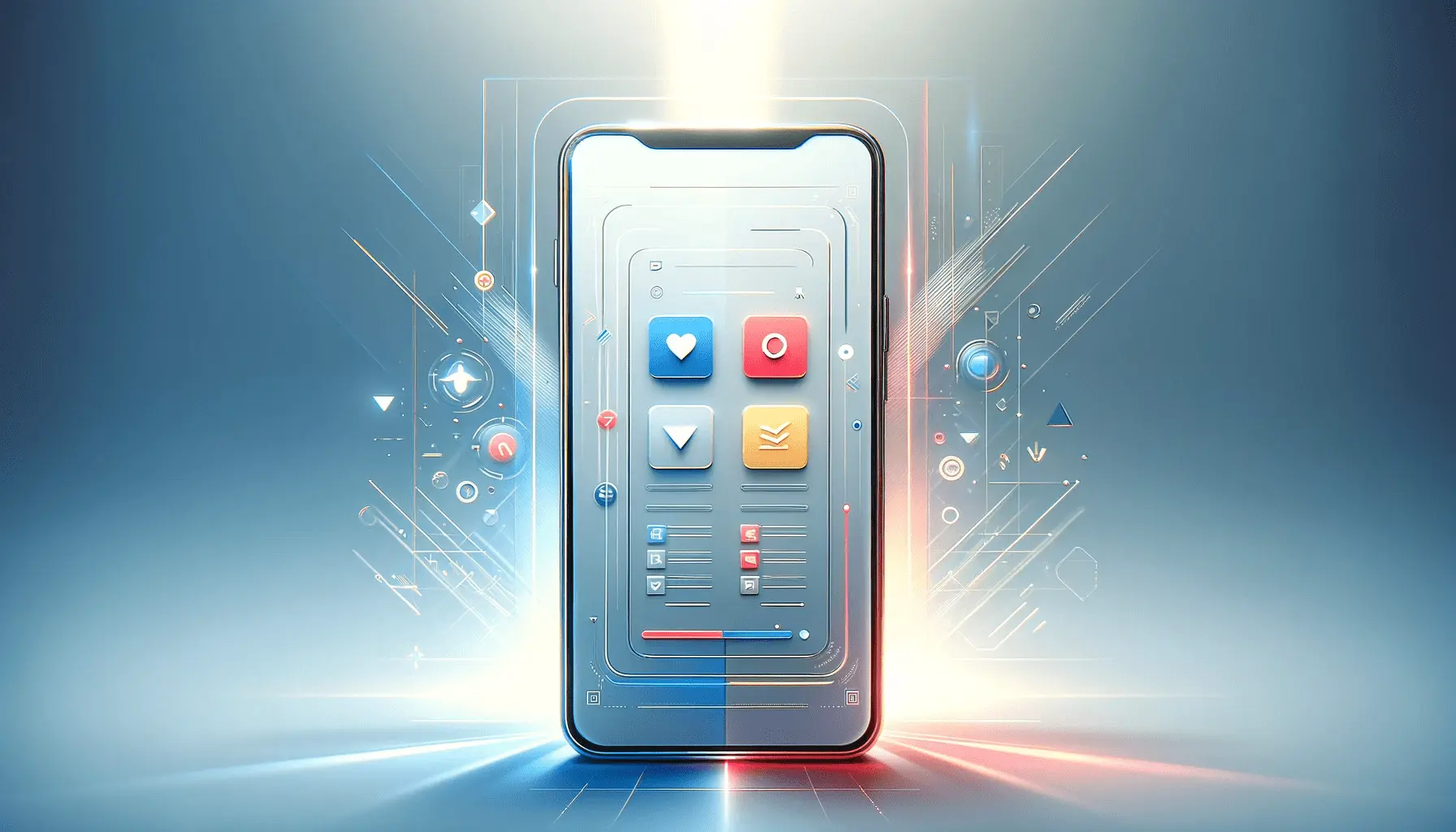Color is not a decoration, but a quiet communicator that determines how we see and interact with a website.
As a marketer or designer, you already know that the right color palette can make or break a user’s experience.
But think of being able to make that choice automatically with precision, creativity, and efficiency.
That’s where AI-generated color palettes come in.
These smart tools are revolutionizing web design so that designers can craft beautiful visual and emotionally engaging experiences with a few clicks of a mouse.
Whether you are designing a portfolio, e-commerce site, or landing page for your ongoing campaign, AI-generated color palettes offer powerful solutions that meet both form and function.
In the following section, we will discuss in length how AI is transforming the paradigm of color in design.
Let us start by understanding what these AI-generated color palettes are and how they actually work.
- What Are AI-Generated Color Palettes?
- Benefits of Using AI-Generated Color Palettes in Web Design
- Top AI Tools for Creating Stunning Color Palettes
- Best Practices in Applying AI-Generated Color Palettes to Web Design
- Future Trends in AI-Generated Color Palettes for Web Design
- Final Thoughts on AI-Generated Color Palettes in Web Design
- Frequently Asked Questions About AI-Generated Color Palettes
What Are AI-Generated Color Palettes?
Let’s face it—picking the perfect color combination can be tough.
You’ve probably spent hours trying to match tones that reflect your brand or evoke a specific emotion.
With AI-generated color palettes, that struggle is becoming a thing of the past.
AI-generated color palettes are collections of colors generated by machine learningAn area of artificial intelligence where computers learn from data without explicit programming. algorithms.
These programs browse vast databases of design examples, color theory, and even user interaction data to generate palette suggestions that not only appear good but also function well for your needs.
How AI Understands and Creates Color Palettes
AI does not just mix random colors.
It is trained on existing design trends, successful brand color schemes, and color harmony principles.
With techniques like neural networksA type of machine learning model designed to mimic the way the human brain processes information. and deep learningA subset of machine learning that uses layered neural networks to analyze complex data patterns., AI software can:
- Decide which color combination works best in a specific industry
- Identify the psychological effect of colors on users
- Create palettes that adapt based on light/dark modes
- Suggest based on mood, keywords, or themes
This means you get AI-generated color palettes tailored to your design needs.
Differences Between AI and Manual Color Choosing
Previously, choosing a color palette was about relying on individual taste or taking time to know what would be suitable.
Using AI-generated color palettes, you’re not wasting that time but are rather obtaining data-driven results.
Here is the difference:
- Speed: AI gives results instantly, whereas previously it used to take hours of trial through manual means.
- Precision: Algorithms account for accessibility and contrast standards.
- Inspiration: AI helps overcome creative blocks with fresh suggestions.
If you’ve ever felt stuck staring at a blank screen, AI-generated color palettes might just be your new favorite co-designer.
Popular AI Tools for Generating Color Schemes
You now enjoy more and more tools that utilize artificial intelligence to generate color palettes.
They give palette recommendations, mood-based picks, and even interactive editing features.
Some of the most popular ones are:
- Colormind – Learns based on user decisions and trending design patterns
- Khroma – Uses AI to recommend palettes from your own favorites
- Coolors – Now includes an AI mode for dynamic creation
- Adobe Firefly – Ties AI to creative suite workflows
All of these tools utilize different AI techniques but share one unifying goal—streamlining and augmenting design through automation using AI-generated color palettes.
The Emergence of AI in Creative Design Workflows
AI isn’t just showing up in color palettes—it’s changing the entire way that design gets done.
From image generation to layout suggestions, AI is quickly becoming a trusted sidekick.
AI-generated color palettes are typically what kick off that process, setting the tone for an entire project.
By incorporating these tools into your workflow, you’re not just keeping up—you’re pushing forward.
So next time you’re working on a new web project, give it a try: start with an AI-generated color palette.
You may be surprised at a mix you never would have come up with—and one your users will love.
AI-generated color palettes eliminate guesswork by learning from vast data sources, helping designers select visually effective combinations in seconds.
Benefits of Using AI-Generated Color Palettes in Web Design
Incorporating AI-generated color palettes in your web design process has multiple advantages that enhance the quality as well as efficiency of your work.
Let’s talk about some of these key benefits:
Time-Saving and Efficiency Gains for Designers
Choosing a uniform color palette by hand may be time-consuming, typically involving long hours of researching and experimenting.
AI-generated color palettes shorten this process through quick analysis of design requirements and the generation of suitable color ranges.
This automation leaves you with more hours to dedicate to other parts of your project where creativity is involved, leading to greater productivity in the long run.
Color Scheme Consistency Across Platforms
Color scheme consistency across various digital platforms is crucial for brand recognition.
AI-generated color palettes ensure consistency by providing standardized colors that can be applied to numerous projects.
This consistency facilitates the creation of a powerful and cohesive brand identity.
Accessibility Improvements with Smart Contrast
Accessibility is an important aspect of web design.
AI-generated color palettes can analyze contrast ratiosThe difference in luminance between two colors, important for readability and accessibility in design. to ensure that text and background combinations are readable by all users, including individuals with visual impairments.
By following accessibility guidelines, these color schemes support a more inclusive user experience.
Real-Time Personalization for UX Design
User experience customization can significantly boost engagement.
AI-generated color palettes can dynamically adapt to user behaviors or preferences and offer personalized visual experiences that engage individual users.
This kind of dynamic responsiveness can lead to enhanced user satisfaction and retention.
Implementing AI-generated color palettes into your web design workflow not only simplifies the design process but also upgrades the overall quality and performance of your digital work.
Through AI technology, you can create good-looking, cohesive, accessible, and personalized web designs that meet evolving user expectations.
Integrating AI-generated color palettes into your workflow results in faster design execution, stronger brand consistency, and better accessibility.
Top AI Tools for Creating Stunning Color Palettes
Using AI-generated color palettes in your design workflow can significantly increase creativity and productivity.
These are some of the best AI tools that can assist you in designing excellent color schemes:
Colormind: Deep Learning for Design
Colormind is a color palette generator based on artificial intelligence that uses deep learning to generate pleasing color combinations.
It learns color aesthetics from a wide range of sources, such as photographs, films, and mainstream art, to ensure the generated palettes are both visually appealing and aligned with the latest design trends.
- Generates web-safe and accessible color palettes
- Ideal for web designers focused on user experience and aesthetics
Khroma: AI That Knows Your Color Style
Khroma employs AI to learn your favorite colors by asking you to select a set of colors you like.
Based on that data, it generates infinite palette combinations tailored to your style.
- Creates personalized AI-generated color palettes
- Allows users to search, discover, and bookmark their favorite schemes
Adobe Firefly and Creative Cloud Integration
Adobe Firefly is an AI-powered feature developed within Adobe’s Creative CloudAdobe’s suite of software and services used for graphic design, video editing, and web development. suite.
It allows users to generate AI-generated color palettes and design materials using simple text inputs.
- Enables quick creation of high-quality visuals
- Works seamlessly with Adobe Creative Cloud tools
- Perfect for designers with varying skill levels
Coolors AI Mode: Speed Meets Style
Coolors is a well-known color scheme generator that now includes an AI mode to enhance its functionality.
The dynamic color palette generation allows designers to create and customize schemes that best match their specific project needs.
- Quick generation of AI-generated color palettes
- User-friendly interface suitable for beginners and pros alike
Huemint: Machine Learning for Unique Schemes
Huemint uses machine learning to create original color palettes for branding, web development, or graphics.
It analyzes millions of options to produce palettes that are both aesthetically pleasing and context-driven.
- Supports branding-specific AI-generated color palettes
- Helps generate distinctive and effective designs
Incorporating these AI tools into your design process can lead to more efficient procedures and innovative results.
With assistance from AI-generated color palettes, designers can focus on creativity and innovation, while trusting that the color selection is optimized and aligned with modern design standards.
Using tools like Colormind, Khroma, and Adobe Firefly, you can generate beautiful, functional palettes customized to your unique project needs.
Best Practices in Applying AI-Generated Color Palettes to Web Design
Applying AI-generated color palettes to your web design can enhance visual appeal as well as user experience significantly.
To maximize their benefit, however, apply the following best practices:
Know the Fundamentals of Color Theory
While color palettes may be generated using AI software, some elementary understanding of color theory is always necessary.
This allows you to assess and edit AI-generated color palettes effectively, ensuring that they suit your design needs.
The fundamentals are:
- Complementary Colors: Colors that are opposite each other on the color wheel, with strong contrasts.
- Analogous Colors: Colors beside one another on the wheel, with harmonious combinations.
- Triadic Colors: Three evenly spaced colors across the wheel, yielding balanced schemes.
Customize AI-Generated Palettes to Suit Brand Identity
AI-generated color palettes are a place to begin.
It is important to adjust these recommendations according to your brand personality and values.
Make sure the chosen colors will appeal to your audience and reflect the intended emotional tone.
Prioritize Accessibility and Inclusivity
Accessibility should be at the forefront of design decisions.
Utilize AI tools that consider contrast ratios and color distinguishability to accommodate users with visual impairments.
Implementing accessible AI-generated color palettes enhances usability for all visitors.
Test Palettes Across Multiple Devices
Colors can appear differently across various screens and lighting conditions.
After selecting a palette, test it on multiple devices to ensure consistency and visual appeal in diverse environments.
Stay Updated with Design Trends
AI tools often reflect the most current design trends.
Staying up to date ensures that the AI-generated color palettes you work with remain modern and relevant, helping your designs stay fresh and engaging.
If you adhere to these best practices, you can effectively integrate AI-generated color palettes into your web design process, creating visually appealing, accessible, and brand-recognized websites that engage your audience.
- Don’t just accept AI suggestions—adjust them to fit your brand’s voice.
- Test palettes in various environments for consistency.
- Know enough color theory to guide AI choices effectively.
Future Trends in AI-Generated Color Palettes for Web Design
AI-generated color palettes in web design are constantly evolving, with new opportunities for creativity and productivity on the horizon.
Here are some emerging trends in the domain:
Automation of Routine Design Tasks
AI is automating repetitive design tasks, such as resizing images and generating color palettes, allowing designers to focus on the more creative and strategic aspects of their work.
This automation not only saves time but also reduces the potential for human error, making AI-generated color palettes a practical asset in modern workflows.
Better Accessibility Features
Modern AI-based solutions have the capability to instantly generate accessible color palettes that ensure all design components adhere to accessibility guidelines.
This is crucial for creating inclusive web designs that accommodate users with various needs.
AI-generated color palettes can significantly contribute to improving digital accessibility standards.
Personalized User Experiences
Color palette generators powered by AI analyze extensive datasets to provide unique and personalized color palettes.
Personalization at this level enhances user experience by aligning the website’s visual style with users’ individual preferences.
The ability to offer customized AI-generated color palettes sets the stage for more engaging digital experiences.
Integration with Design Platforms
AI tool integration with design software is becoming more common.
Collaborations like those between CanvaA graphic design platform that allows users to create visual content using a drag-and-drop interface. and PinterestA social media platform where users discover and save ideas using visual bookmarks called 'pins'. leverage predictive analytics to offer suggested templates and color palettes based on trending visual data, making the designer’s job easier and more intuitive.
This makes AI-generated color palettes more accessible within familiar platforms.
Multimodal Color Recommendation Systems
Recent advances in AI have led to the development of multimodalIn AI, refers to systems that can process and integrate multiple types of data, such as text and images. color recommendation systems that consider both color and text contexts.
These systems offer text-aware color suggestions, enhancing the coherence and contextual relevance of each palette used.
This adds another layer of intelligence to AI-generated color palettes, pushing creative possibilities even further.
Embracing these trends allows designers to benefit from the full advantages of AI-generated color palettes, leading to more creative, efficient, and user-friendly web designs.
From personalized experiences to multimodal AI systems, future trends will make AI-generated color palettes even smarter and more intuitive.
Final Thoughts on AI-Generated Color Palettes in Web Design
Why AI-Generated Color Palettes Are Revolutionizing Web Design
AI-generated color palettes are no longer new news—they’re becoming the next big thing for web designers today.
These intelligent tools blend data-driven logic and inspirational creativity in one place, making it possible for professionals to save time while creating visually compelling and emotionally charged designs.
With design demands growing and user expectations shifting, AI assists in automating workflows, inspiring creativity, and maintaining consistency for digital experiences.
Designers’ Best Advantages
Throughout this article, we’ve talked about how AI-generated color palettes provide real-world advantages.
Using these tools effectively, you can:
- Save time spent manually selecting and testing color combinations
- Ensure visual consistency and brand harmony across all platforms
- Enhance accessibility with smart contrast and readability in mind
- Design personalized color schemes that resonate with your target audience
- Benefit from current design trends without constant manual research
Tips for Maximizing AI-Generated Color Palettes
To make the most of AI-generated color palettes, designers can implement the following best practices:
- Familiarize yourself with the fundamentals of color theory in order to effectively interpret AI recommendations
- Tailor palette outcomes to fit your specific brand identity
- Test color schemes on varying screens and light environments
- Prioritize inclusivity and accessible design by checking contrast ratios
- Keep current with the latest AI technologies and platform design integrations
The Future Is Hyper-Personalized, Smart, and Creative
The future of AI-generated color palettes lies in their ability to deliver hyper-personalized, context-sensitive, and multimodal design suggestions.
With emerging technology, we can expect AI to be an even more intelligent partner in the design process—able to predict trends, learn from user habits, and even automatically suggest brand-aligned styles.
For designers, marketers, and developers, embracing AI-generated color palettes is to gain access to the next level of design potential.
It is not just about choosing colors—it’s about creating memorable, accessible, and visually striking digital experiences at scale.
AI isn’t replacing designers—it’s becoming their most powerful creative partner in building modern, engaging, and accessible websites.
Quality web design is key for a great website! Check out our service page to partner with an expert web design agency.
Frequently Asked Questions About AI-Generated Color Palettes
AI-generated color palettes are changing design by leveraging data-driven knowledge and creative intuitions.
Below are some frequently asked questions and concise answers to guide you through their impact on web design.
AI-generated color palettes are colors created by artificial intelligence programs, which scan principles of design, trends, and user experience to provide appealing color combinations for various projects.
AI tools use algorithms and machine learning to search through large datasets, such as color theory and design examples, to recommend harmonious and visually pleasing color combinations.
They provide efficient, consistent, and data-driven color suggestions, allowing designers to concentrate more on strategy and creativity in their web design workflows.
Yes, designers can input specific brand colors or preferences into AI tools, which generate palettes aligned with brand identities and style guides.
Yes.
These tools are user-friendly and help beginners select balanced and attractive color schemes without deep knowledge of color theory.
AI tools can analyze contrast ratios and suggest accessible color combinations, ensuring designs are inclusive for users with visual impairments.
Yes, most AI software continuously learn from new data, enabling them to recommend color palettes that align with both current and emerging design trends.
AI software can offer color palettes based on desired emotional outcomes, helping designers visually express moods and communicate messages effectively.
Yes, many free AI-powered color palette generators are available online, offering a range of features for various design needs and budgets.
